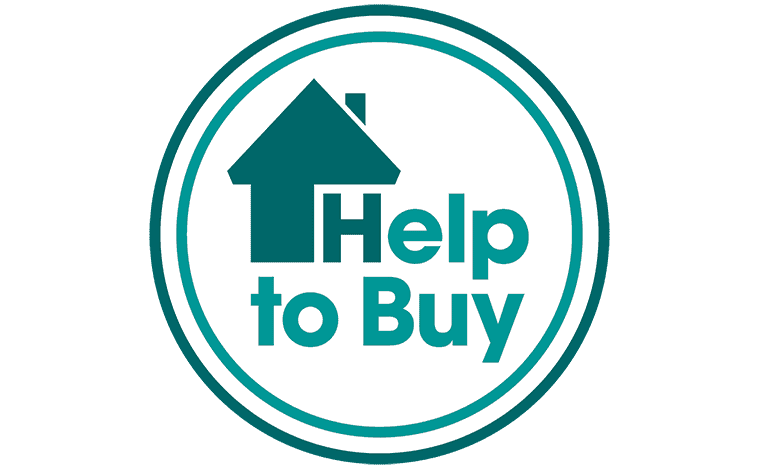Help to Buy is a government scheme that means you could buy a home with a deposit as low as 5%. Introduced in the March 2013 budget, the scheme was designed to make it easier for people with smaller deposits to get on the property ladder, and for existing homeowners to move house.
How does Help to Buy work?
With a Help to Buy Equity Loan, the Government lends first-time buyers up to 20% of the cost of their newly built home, which means some only need a 5% cash deposit and a 75% mortgage to make up the rest. And, you won’t be charged loan fees on the 20% loan for the first five years of owning your home.
Since the launch of the Help to Buy: equity loan scheme (1 April 2013 to 31 March 2017), 120,864 properties were bought with the support of the scheme, according to official figures. 81% of these sales were to first-time buyers.
There are two fundamentals to the scheme. The first is an Equity Loan scheme, which is open to both first-time buyers and home-movers but is restricted to new-build homes. So, if you’re looking for a modern place to live, a Help to Buy equity loan could be a good way to reduce the deposit you need to save up for. Even if you buy through Help to Buy and have a mortgage for less than the full price of the property, you become the legal owner with 100% title to your home.
So, if you wanted to buy a house for £400,000 with a 5% deposit you would need:
- £20,000 deposit
- £300,000 mortgage loan
- £80,000 loan from the government
Taking advantage of the Help to Buy scheme has two main benefits. Firstly, you only need a 5% deposit. Secondly, as you’re only borrowing 75%, you will be able to acquire better mortgage rates.
Help to Buy: London rates
To reflect the current property prices in London, the government will lend buyers up to 40% of a new-build’s price, rather than the 20% limit that applies outside of London. This means the maximum you can borrow from Help to Buy in England is £120,000, but up to £240,000 for London. There is no minimum amount.
How much do you need to pay?
Help to Buy equity loans are interest-free for the first five years. After this period, you start incurring a monthly interest fee, which starts at 1.75%. This increases yearly by any increase in the Retail Prices Index, plus 1%.
Because your equity loan from the government doesn’t decrease in size (unless you opt for early repayment), over time the cost of the admin fee could become pretty substantial, especially if inflation increases significantly. These fees come in addition to mortgage repayments.
Buyers must repay the equity loan in full after 25 years, or when your mortgage term ends, or when you sell your home – whichever happens first. The repayment is equal to the market value of your loan at the time, rather than the same quantity that you borrowed.
Following the purchase, buyers can also at any time make voluntary part repayments (also known as ‘staircasing’), or even a full repayment, of the Help to Buy assistance at the current market value. The minimum voluntary repayment is 10% of the market value at the time of repayment.
When participating in the Help to Buy scheme, you could either end up paying back more or less than you borrowed. This depends on whether your home increases or decreases in value.
For example, a person might take a 20% equity loan to buy a property worth £400,000 – so the loan is £80,000. However, when they decide to sell, the property’s value has increased to £500,000. The amount needed to repay the loan now jumps to £100,000, 20% of the new value of the home, not the amount first borrowed.
Extra fees
Buyers also need to pay a monthly management fee of £1 per month from the start of the loan until it is repaid. This fee, as well as the interest fees, do not count as repayments to your equity loan, so, unfortunately, do not reduce the amount owed.
To qualify for Help to Buy:
- You need deposit of at least five percent
- The maximum purchase price is £600,000 (though this limit changes for Help to Buy ISAs)
- The property purchased must be your only residence – you cannot rent out your existing home and buy a second home with Help to Buy
- Buyers must take out a first charge mortgage with a qualifying lender.
- Help to Buy buyers outside London must be able to fund up to 80% of their selected property through a conventional mortgage and deposit.
- London Help to Buy buyers must be able to fund 60% of the property through a conventional mortgage and deposit.
- Buyers cannot use the scheme if they require the main mortgage to be more than 4.5 times their household income.
The Local Help to Buy Agent will assess your application to ensure that you are in a position to afford a conventional mortgage for the purchase.
The Help to Buy scheme is available in England only. The Scottish Government, Welsh Government and Northern Ireland Housing Executive run similar schemes – check out their websites to find out more.
Where are Help to Buy homes available?
Help to Buy homes are available from house builders registered to offer Help to Buy homes in England. Registered builders will make it clear in their advertising if Help to Buy homes are available on their development sites.
Your Local Help to Buy Agent can also help you find out more about the availability of Help to Buy homes in your area.
What’s next? There are four main steps to successfully purchasing a property with the Help to Buy scheme. We’ll cover those in detail in another post.
For more detailed tips on buying a property using bridging, read more here.
